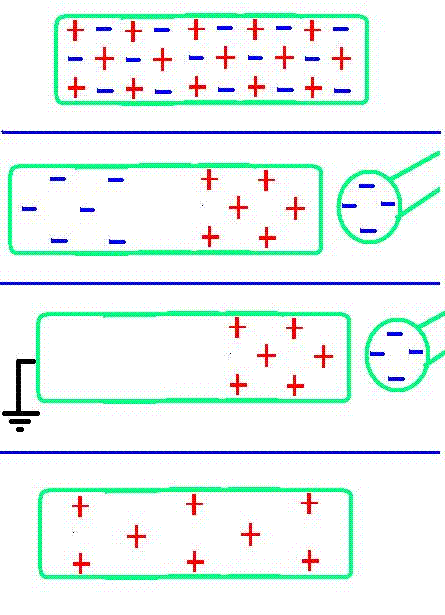Section "Nanospin Electrons" - Nanoelectronics
The behavior of "Nanospin Electrons" in the face of electric current
Researcher and author: Dr. ( Afshin Rashid)
"Nanospin electrons" with any nanoscale external dimensions (size range from approximately 1 to 100 nm) or having a nanoscale internal structure or surface structure define the catalytic reaction model in conductive nanoparticles . "nano-spin-electrons" means a natural, incidental or manufactured substance containing particles, in the unconfined state or as an aggregate or as agglomerates and where for 50% or more of the particles in the number size distribution, one or more The external dimension is in the size range 1 - 100 nm in certain cases and in cases where, the size distribution threshold may be replaced by a threshold between nanomaterial particles. By inference from the above, "nano-spin electrons" with one or more dimensions Externals less than 1 nm should be considered as critical devices in nanoelectronics. "Nanospin electrons" that react naturally. or produced as a by-product of combustion (unintentional) from combustion processes. They are usually physically and chemically heterogeneous and are often called porous particles. On the other hand, "Nanospin Electrons" that are produced and designed from multiple structures with physical and electronic goals for a specific purpose or function .
"Nanospin Electrons" is an example of this process in that nanoparticles are made to aid in nanoelectronics . Carbon nanotubes are also being made to be used in a process called nanotubes to create bacterial sensors. Nanotubes are used as composites to bend in response to the application of electrical voltage. Elsewhere, nanoelectronics like (nanowires) also use nanomaterials - in this case, nanowires. Applications for the use of nanowires - zinc oxide nanowires - in flexible solar cells as well as nanotransistors are also used.
Conclusion :
The versatility of "nano spin electrons" in terms of the ability to model the catalytic reaction in nanoconducting particles highlights their usefulness for specific needs. An additional advantage is their high porosity, which increases the demand for their use in many nano-microelectronics industries.
Researcher and author: Dr. ( Afshin Rashid)
Specialized doctorate in nano-microelectronics





